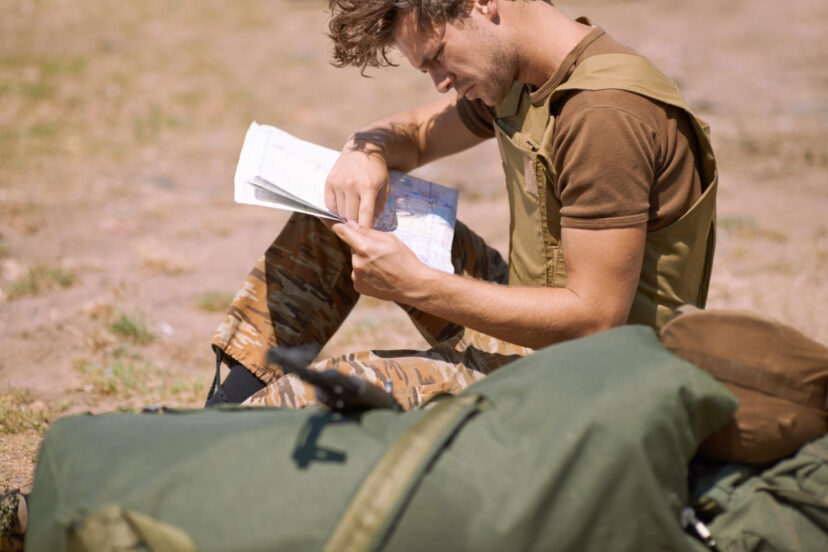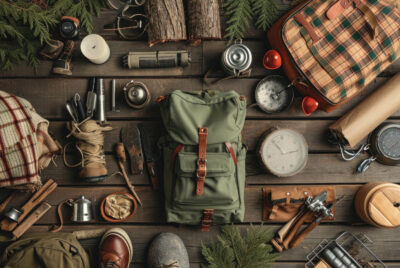Surviving in the Wild: The Ultimate Guide to Wilderness Survival
There’s something primal and exhilarating about venturing into nature and surviving in the wild. But what happens when that day hike turns into an unexpected overnight stay? Or when that camping trip goes sideways because of sudden weather changes?
Surviving in the wild isn’t just for extreme adventurers or reality TV contestants. It’s practical knowledge that could save your life one day and the difference between a survival situation and a disaster often comes down to a handful of critical skills and the right mindset.
So let’s walk through everything you need to know about surviving in the wild—from the fundamental principles that will keep you alive to the specific techniques that can turn a potential emergency into just another story to tell around your next campfire.
The Rule of Threes: Your Survival Priority Framework
Before we dive into specific techniques for surviving in the wild, let’s understand how to prioritize your efforts when stranded in nature.
Understanding the Survival Timeline
The Rule of Threes provides a simple framework for remembering how long the human body can survive without essentials:
- Three minutes without air
- Three hours without shelter in extreme conditions
- Three days without water
- Three weeks without food
This isn’t just a neat mnemonic—it’s a priority list for surviving in the wild.
Applying the Rule in Real Situations
This hierarchy of needs shapes every decision in a survival scenario. Many inexperienced outdoorspeople make the critical mistake of searching for food first when stranded. Meanwhile, they’re ignoring the more immediate threats of exposure or dehydration.
When surviving in the wild, remember: shelter before water, water before food. This simple prioritization can be the difference between life and death.
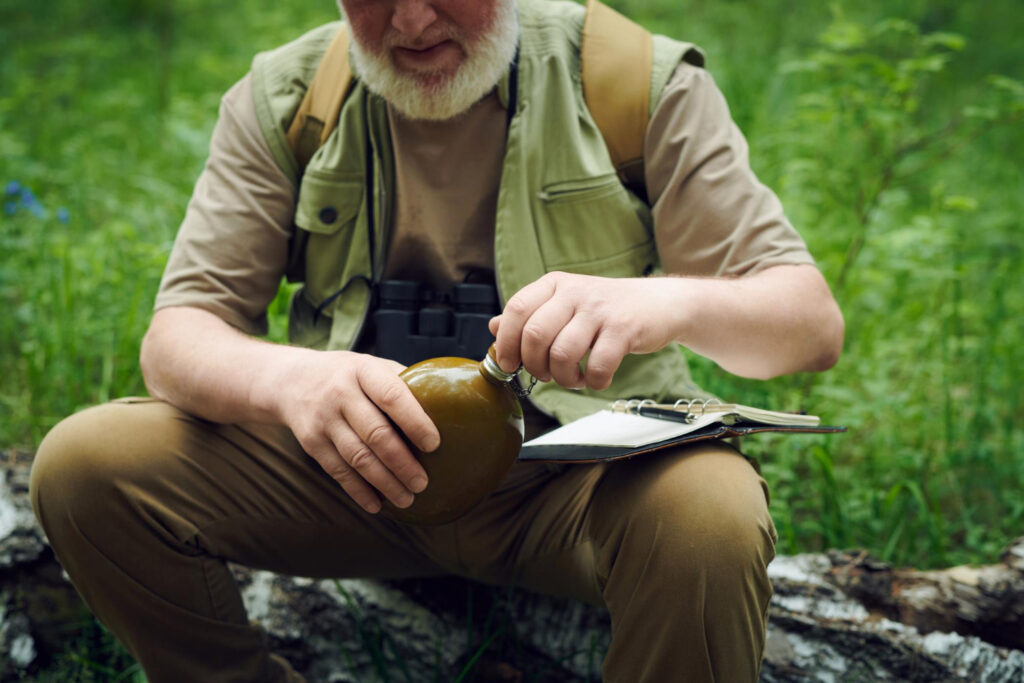
Finding and Purifying Water: Your Most Precious Resource
After shelter (or sometimes before, depending on conditions), water becomes your most critical need for surviving in the wild.
Water Location Strategies
Finding water isn’t always as simple as following a marked trail to a lake. When you’re truly surviving in the wild, you need to know where to look:
- Follow the downhill path: Water always flows downhill. In valleys and low areas, you’re more likely to find streams or at least damp ground.
- Watch for animal trails: Animals need water just like we do, and their paths often lead to water sources. I once found a life-saving stream by following deer tracks in northern Maine.
- Look for water-loving plants: Cattails, willows, cottonwoods, and reeds typically grow where water is present or near the surface.
- Morning dew collection: In desperate situations, tying cloth around your ankles and walking through dewy grass can yield small amounts of water.
Purification: Making Water Safe to Drink
Finding water is only half the battle—making it safe to drink is equally important for surviving in the wild. Even crystal-clear mountain streams can harbor dangerous pathogens.
Boiling: The Gold Standard
Boiling remains the most reliable method for purifying water when surviving in the wild. Bring water to a rolling boil for at least one minute (add an additional minute for every 1,000 feet above sea level) to kill harmful microorganisms.
Filtration Methods
Commercial filters are great if you have them, but in a true survival situation, you might need to improvise:
- Layered filtration: Create layers using gravel, sand, charcoal from your fire, and cloth to filter out contaminants.
- Charcoal filtering: Crushed charcoal from your campfire can help remove impurities and improve taste.
Chemical Purification
If you’ve packed iodine tablets or liquid chlorine dioxide, follow the instructions carefully. These take longer to work in cold or cloudy water.
Solar Still: For Desperate Times
When no water source is available and you’re truly surviving in the wild, a solar still can extract moisture from seemingly dry ground:
- Dig a hole about 3 feet across and 2 feet deep
- Place a container in the center
- Cover the hole with plastic sheeting
- Place a small stone in the center to create a depression above your container
- Seal the edges with soil and wait for condensation to collect
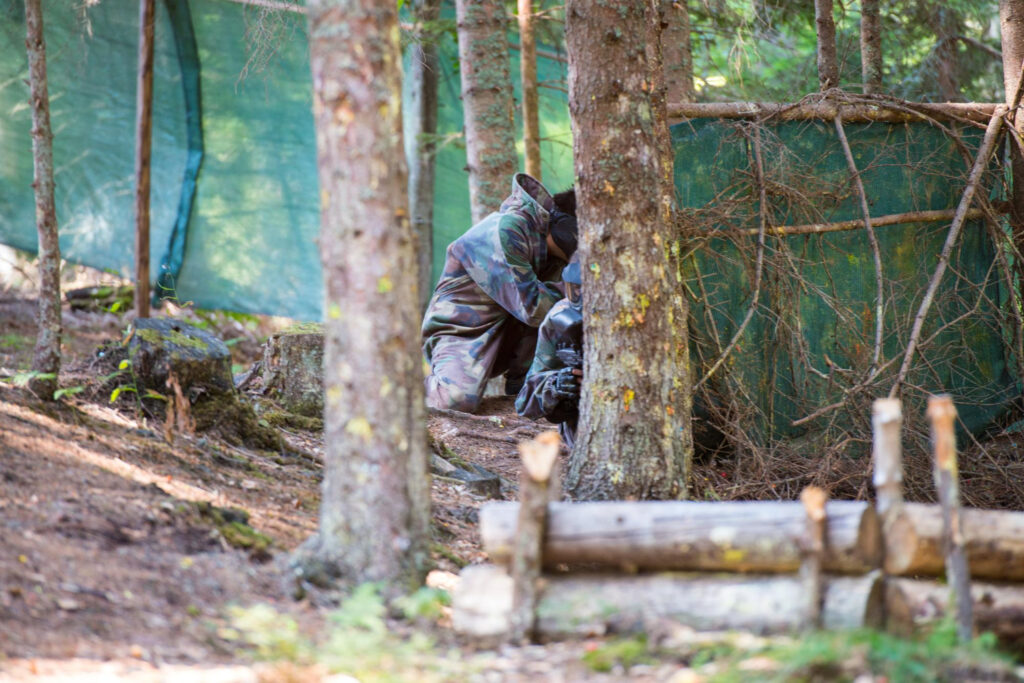
Building a Survival Shelter: Your Protection from the Elements
When surviving in the wild, exposure to the elements can kill you faster than almost anything else. Even experienced hikers can make the fatal mistake of underestimating how quickly hypothermia can set in, even in mild conditions when wet.
Selecting the Ideal Shelter Location
Before you start gathering materials, carefully choose your shelter site:
- Avoid natural hazards: Stay away from dead trees (widow-makers), flash flood zones, animal paths, and insect colonies.
- Find natural protection: Use rock formations, dense trees, or hillsides to block wind and provide structural support.
- Consider water proximity: Camp close enough to water for convenience but far enough to avoid insects and potential flooding.
- Think about rescue visibility: If hoping to be found, choose a location visible from the air or frequently traveled areas.
Types of Wilderness Shelters
Depending on your environment and the materials available, various shelter types can be effective for surviving in the wild:
The Lean-to: Quick and Versatile
The lean-to remains a classic for surviving in the wild because of its simplicity:
- Find a fallen tree or secure a sturdy branch horizontally between two trees
- Lean smaller branches against this main support
- Weave smaller sticks through these branches to create a framework
- Layer leaves, pine needles, or other vegetation to waterproof your structure
The Debris Hut: Your Cold-Weather Lifesaver
For colder conditions when surviving in the wild, the debris hut provides better insulation:
- Create a framework similar to a lean-to but smaller and more enclosed
- Pile at least 2 feet of leaves, pine needles, or other debris on top
- Create a small entrance that you can seal behind you
- Line the inside with dry materials to create a sleeping platform
The key to a successful debris hut is using far more material than seems necessary—it will compress over time.
Snow Shelters: Winter Survival
Snow might seem like your enemy when surviving in the wild during winter, but it’s actually an excellent insulator:
- Snow caves: Dig into a snowdrift or pile, hollowing out a space just large enough for your body with a small entrance tunnel that dips below the sleeping platform to trap warm air.
- Quinzhees: Pile snow, let it settle for an hour, then hollow it out to create a dome shelter.
A well-built snow shelter can maintain an interior temperature 30-50 degrees warmer than outside conditions—potentially life-saving in extreme cold.
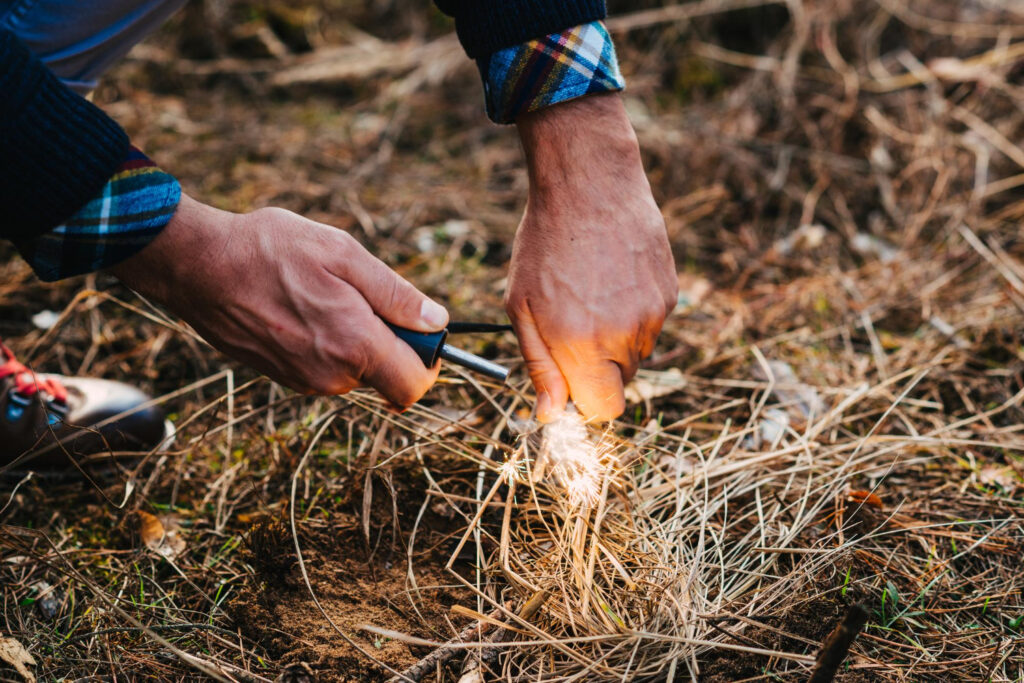
Fire Building: Creating Warmth and Security
Few skills contribute more to surviving in the wild than the ability to create fire. It provides warmth, light, protection from predators, the ability to purify water, cook food, and significant psychological comfort.
The Fire Triangle: Understanding the Science
Every fire requires three elements: fuel, oxygen, and heat. When surviving in the wild, understanding this triangle helps troubleshoot fire-starting problems:
- If your fire keeps going out, you may need more oxygen (blow gently or create better airflow)
- If it won’t start, you may need more heat (use finer tinder or a better ignition source)
- If it starts but dies quickly, you need better fuel progression
Fire-Starting Methods for the Wilderness
Modern Tools
While surviving in the wild, having a reliable fire starter can be your greatest asset:
- Ferrocerium rods (ferro rods) work when wet and last for thousands of strikes
- Waterproof matches provide easy ignition in difficult conditions
- Lighters are convenient but can fail when wet or empty
Primitive Methods
If you’re forced to create fire without modern tools while surviving in the wild, several techniques can work:
- Bow drill: Creates friction using a spindle, fireboard, bow, and socket
- Hand drill: Simpler but more physically demanding than the bow drill
- Fire plow: Involves rubbing a hardwood shaft against a softwood groove
- Flint and steel: Striking high-carbon steel against flint to create sparks
Building the Perfect Fire Lay
The structure of your fire is just as important as your ignition source when surviving in the wild:
- Gather materials before starting: Collect more tinder, kindling, and fuel wood than you think you’ll need
- Create a tinder bundle: Use dry grass, shredded bark, cotton balls, or dryer lint
- Arrange kindling: Set up small twigs in a teepee or log cabin structure around your tinder
- Add fuel gradually: Once the kindling catches, slowly add larger pieces
Fire Safety in the Wilderness
Even when surviving in the wild, responsible fire management is crucial:
- Clear a 5-foot diameter area down to mineral soil
- Keep a water source or dirt nearby for extinguishing
- Never leave a fire unattended
- Thoroughly douse and stir fires until cool to the touch before leaving
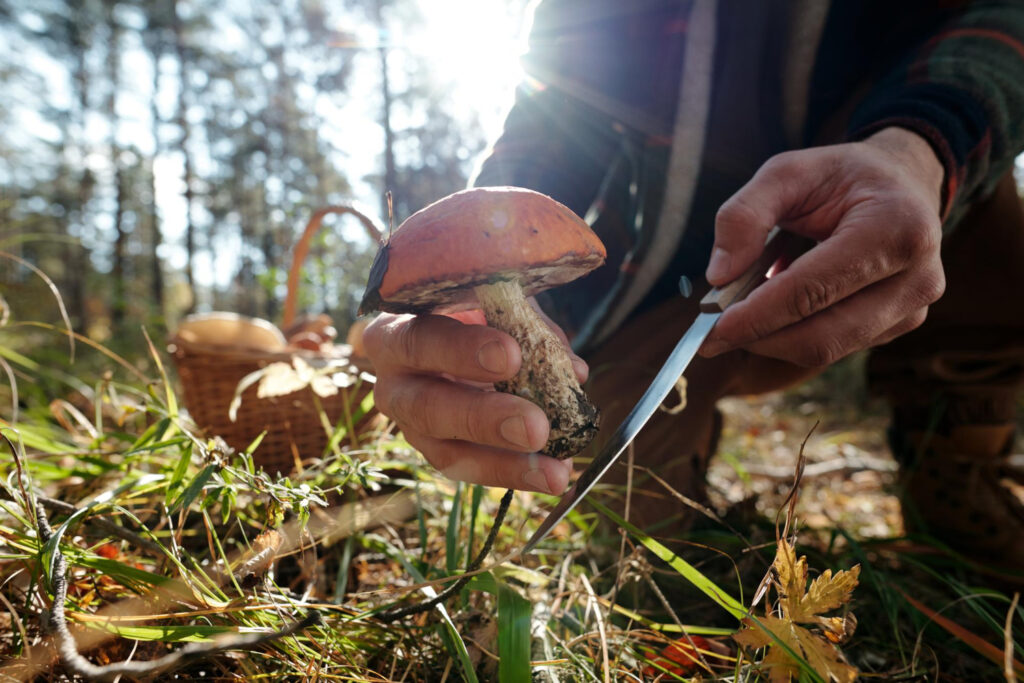
Finding Food: Sustaining Energy in the Wild
While food is less immediately critical than shelter, water, or fire for surviving in the wild, it becomes essential for long-term situations. Knowing how to find sustenance can maintain your strength and mental clarity.
Foraging for Plant Foods
The plant kingdom offers abundant food sources when surviving in the wild, but incorrect identification can be deadly:
Safety Rules for Foraging
- Learn to positively identify edible plants before you need the skill
- If uncertain, apply the Universal Edibility Test (small taste, wait hours, larger taste, wait again)
- Avoid plants with these warning signs: milky sap, bitter taste, three-leaved patterns, umbrella-shaped clusters, and beans/bulbs
Reliable Wild Edibles
Some widely available edible plants for surviving in the wild include:
- Dandelions: Entirely edible from flower to root
- Cattails: Called the “supermarket of the swamp” with edible shoots, pollen, and roots
- Pine trees: Inner bark and pine nuts are edible; needles make vitamin-rich tea
- Berries: Blackberries, raspberries, and blueberries are easily recognizable
Trapping and Hunting
For protein sources when surviving in the wild, trapping generally requires less energy expenditure than active hunting:
- Simple snares: Create wire or cordage loops along game trails
- Figure-four traps: Use sticks to create a trigger mechanism for deadfall traps
- Fishing: Fashion hooks from bones, pins, or thorns; use natural bait like worms or insects
My most successful wilderness food procurement actually came from setting multiple small traps rather than attempting to hunt larger game—smaller animals are more abundant and easier to catch.

Navigation: Finding Your Way Back to Civilization
Getting lost can quickly escalate into a survival situation. Understanding how to navigate when surviving in the wild is a fundamental skill.
Using Nature’s Navigation Tools
When your GPS fails and you have no compass, nature provides several directional indicators:
- The sun: Rises in the east, sets in the west; at noon, shadows point north (in the Northern Hemisphere)
- Stars: The North Star (Polaris) indicates true north in the Northern Hemisphere
- Watch method: Point the hour hand toward the sun; bisect the angle between the hour hand and 12 o’clock to find south (Northern Hemisphere)
Natural Navigation Indicators
The environment offers subtle clues for surviving in the wild and finding direction:
- Tree growth: In the Northern Hemisphere, moss often grows more abundantly on the north side of trees
- Snow melt: South-facing slopes melt faster
- Spider webs: Tend to appear on the south sides of trees in North America
- Satellite dishes: Usually point south in the Northern Hemisphere
Creating Improvised Navigation Tools
When surviving in the wild without equipment, you can fashion basic navigation tools:
- Shadow stick method: Place a stick vertically in the ground; mark the tip of the shadow. Wait 15 minutes, mark again. The line between marks runs approximately east-west.
- Floating needle compass: Magnetize a needle by rubbing it on silk or hair, float it on a leaf in still water to find north.
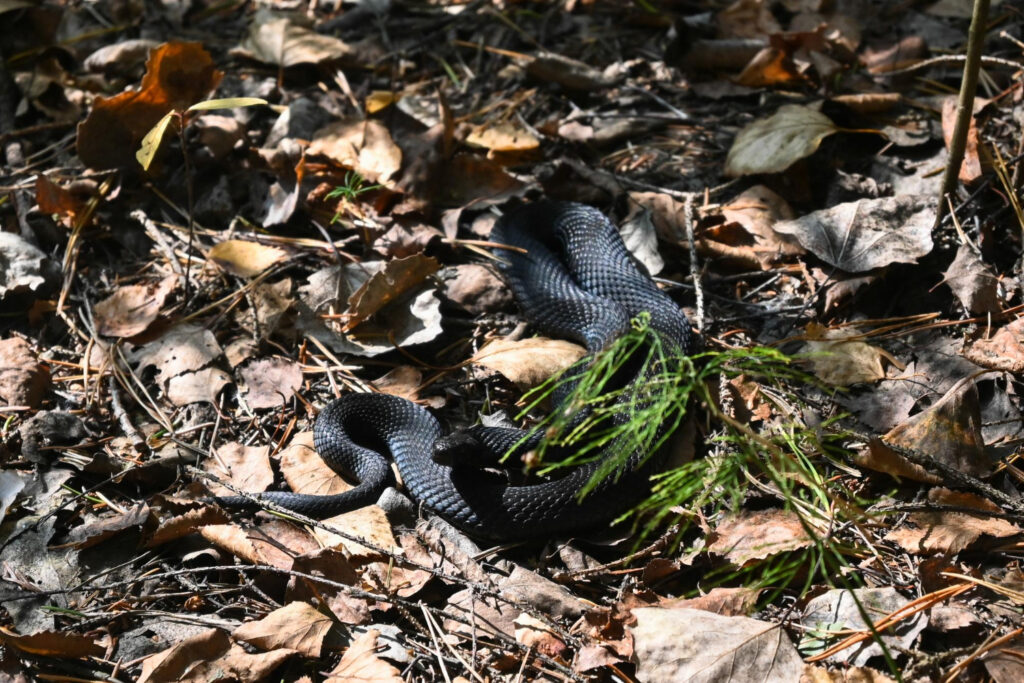
Wildlife Encounters: Managing Risks from Nature
When surviving in the wild, you’re sharing space with creatures who call it home. Respecting and understanding wildlife is crucial for coexistence.
Bear Encounters
Different bear species require different approaches when surviving in the wild in their territory:
- Black bears: Usually less aggressive; stand your ground, make yourself look large, and make noise
- Grizzly bears: Play dead if attacked, covering your neck and remaining still
- Any bear that appears to be stalking you: Fight back with whatever is available
Snake Safety
Venomous snakes exist in almost every wilderness area. When surviving in the wild, follow these guidelines:
- Watch where you place hands and feet
- Check inside shoes and gear before use
- If bitten, immobilize the affected area at heart level, stay calm, and seek help
Insect Protection
While less immediately threatening than larger wildlife, insects can cause disease and discomfort when surviving in the wild:
- Use smoke from your fire to repel mosquitoes
- Avoid standing water where insects breed
- Create protective clothing from natural materials if necessary
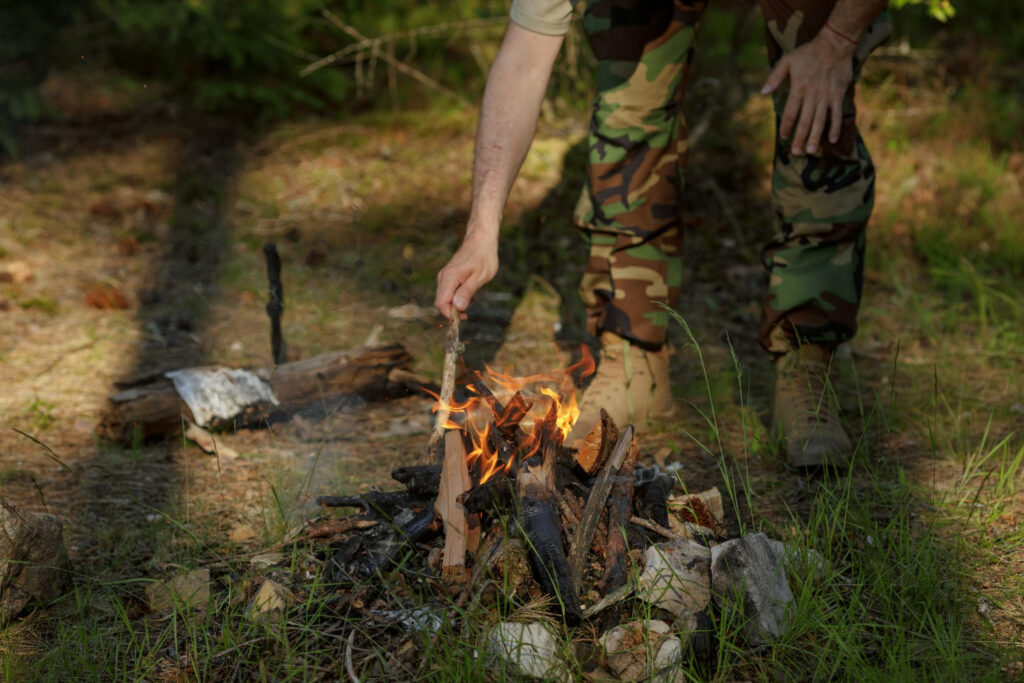
Signaling for Rescue: Getting Help When Needed
When surviving in the wild, knowing when and how to signal for rescue can expedite your return to safety.
Ground-to-Air Signals
International ground-to-air signals for those surviving in the wild:
- Three of anything (fires, whistle blasts, gunshots) is a universal distress signal
- Create large geometric shapes visible from the air: a triangle with a line through it means “need medical assistance”
- Use contrasting materials (bright clothing, reflective items) to stand out from natural surroundings
Signal Mirrors and Whistles
Small items with big impact for surviving in the wild:
- A signal mirror can be seen up to 10 miles away on a clear day
- A whistle can be heard much farther than the human voice and requires less energy
The Psychological Aspect of Rescue
Maintaining a positive attitude while surviving in the wild is crucial. Many survival experts agree that mental toughness accounts for up to 80% of survival success. Staying busy with constructive tasks helps manage fear and anxiety.
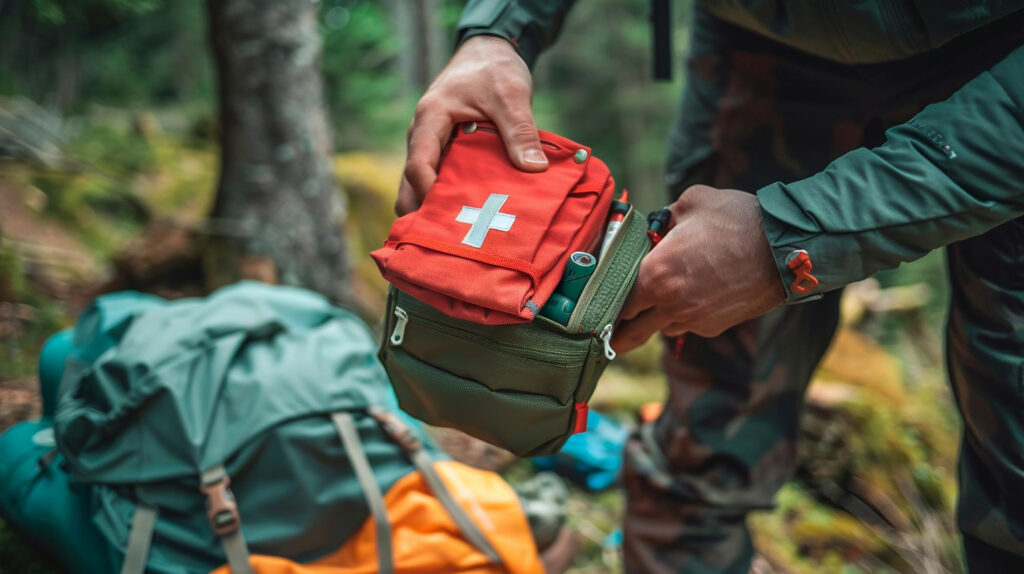
First Aid Essentials: Managing Injuries in Remote Settings
Injuries create additional challenges when surviving in the wild. Basic first aid knowledge becomes even more valuable without immediate medical access.
Treating Common Wilderness Injuries
Cuts and Scrapes
When surviving in the wild, even minor wounds can become serious if infected:
- Clean thoroughly with purified water
- Apply natural antiseptics like pine resin or yarrow if available
- Cover with clean material and change dressing daily
Sprains and Fractures
Mobility limitations can complicate surviving in the wild:
- For sprains: Rest, elevate, compress with improvised bandages, and apply cold if available
- For fractures: Immobilize with natural splints made from straight sticks and cloth or plant fibers
Burns
Burns risk infection and fluid loss when surviving in the wild:
- Cool immediately with clean water (not ice)
- Cover with clean, dry bandage
- Do not pop blisters, which serve as natural protection
Improvised Wilderness First Aid Supplies
When surviving in the wild without a medical kit, nature provides alternatives:
- Bandages: Clean cloth, large leaves, or birch bark
- Splints: Straight sticks padded with moss or cloth
- Pain relief: Willow bark contains salicin (similar to aspirin)
- Antiseptic: Pine resin, honey, or certain crushed leaves like yarrow

The Survivor’s Mindset: Mental Fortitude in the Wilderness
Perhaps the most underrated aspect of surviving in the wild is psychological resilience. Your mental state affects every decision and action in a survival situation.
The Will to Survive
What separates those who emerge from wilderness ordeals from those who don’t? When surviving in the wild, maintaining these mental attributes is crucial:
- Positive attitude: Believing in your ability to overcome challenges
- Adaptability: Willingness to change plans as circumstances evolve
- Determination: Persistence despite discomfort and setbacks
- Focus: Concentrating on immediate needs rather than distant concerns
The STOP Method
When first realizing you’re in a survival situation, use this technique for surviving in the wild:
- S: Stop – Avoid panicking and making hasty decisions
- T: Think – Consider your situation objectively
- O: Observe – Take stock of your resources and surroundings
- P: Plan – Develop a clear course of action prioritized by need
The simple act of stopping to think clearly can make the difference between controlled safety and potential disaster.
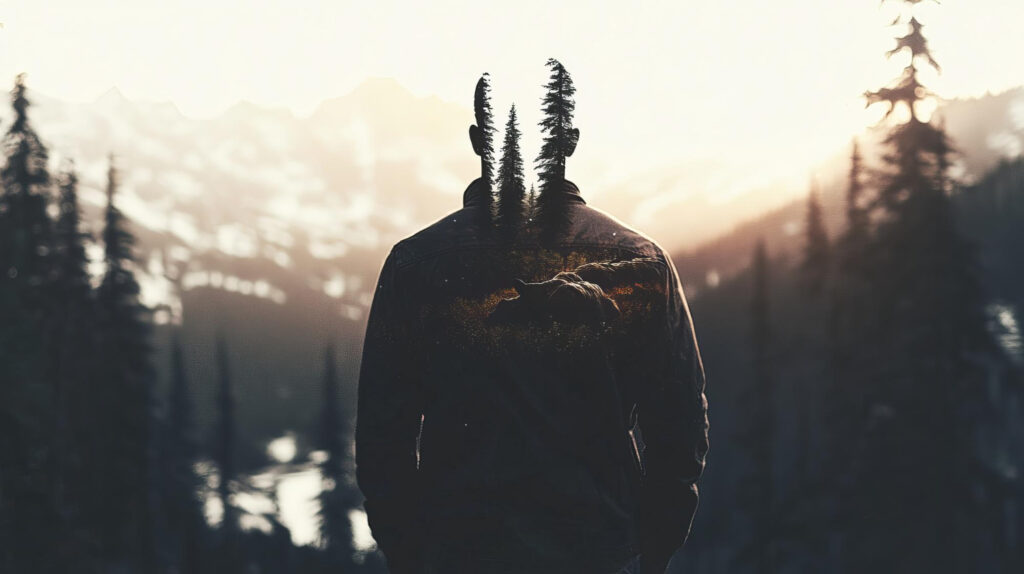
Bringing It All Together
Surviving in the wild isn’t about heroic feats or superhuman endurance. It’s about understanding priorities, making sound decisions, and maintaining a positive attitude through challenging circumstances.
The skills outlined in this guide—finding water, building shelter, creating fire, locating food, navigating, and handling emergencies—form the foundation of wilderness survival. But perhaps most importantly, developing the right mindset transforms these separate techniques into a cohesive approach to surviving in the wild.
The wilderness doesn’t have to be feared. With proper knowledge, preparation, and respect, nature becomes not just a place we can survive in, but one where we can truly thrive. After all, our ancestors spent millennia surviving in the wild before the comforts of modern civilization. That knowledge lives somewhere in all of us—sometimes we just need a reminder of what we’re capable of when challenged by the natural world.
So the next time you step onto a trail, remember: you’re not just a visitor in the wilderness. You’re carrying the accumulated wisdom of generations who mastered the art of surviving in the wild before you. Honor that legacy by learning these skills before you need them, and pass them along whenever you can.
Frequently Asked Questions About Wilderness Survival
Q: What should I prioritize if suddenly stranded in the wilderness? A: Follow the Rule of Threes when surviving in the wild: address immediate threats first (shelter in extreme weather), then find water, and finally locate food.
Q: How can I start a fire if everything is wet? A: Look for naturally water-resistant materials like birch bark, pine resin, or the inner dry portions of fallen logs. Split wood to access dry interiors, and build a platform to keep your fire off wet ground when surviving in the wild.
Q: What’s the safest way to find food if I’m lost in the wilderness? A: Focus on easily identifiable edible plants like berries, nuts, and cattails. Set simple traps near animal trails, and look for bird eggs. Avoid unfamiliar mushrooms and plants with milky sap when surviving in the wild.
Q: How do I signal for help if lost? A: Use contrasting colors visible from the air, create three of anything (fires, piles of rocks, etc.), use a signal mirror toward aircraft, and employ three whistle blasts or other repetitions of three when surviving in the wild.
Q: What natural indicators can help me find direction without a compass? A: The sun’s position (east in morning, west in evening), star patterns (particularly the North Star), moss growth patterns on trees, and faster snow melting on south-facing slopes can all help with direction when surviving in the wild.

